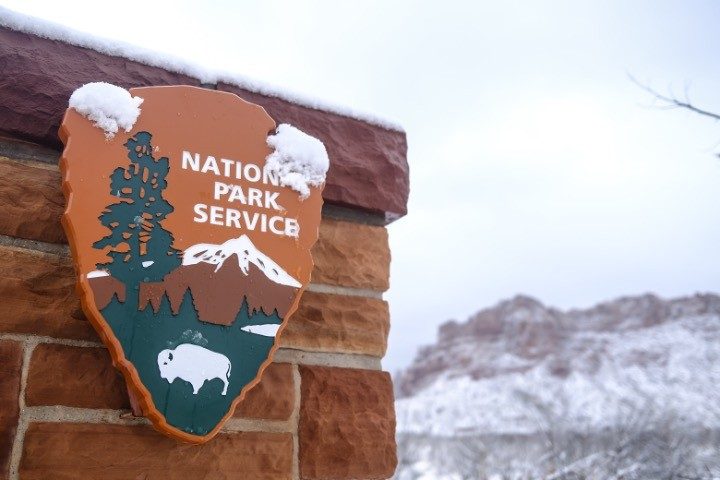
The federal government lost track of almost 15 million acres of land — an area that would cover the states of Vermont, New Hampshire, and Connecticut — yet insists that federal agencies are the best stewards of “public” land.
An article published by the Foundation for Economic Education (FEE) relates how this massive mishandling of resources came to light:
“Across America, 15 million acres of state and federal land is surrounded by private land, with no legal entry by road or trail. If this so-called landlocked land was one contiguous piece, it would form the largest national park in the country, nearly the size of Vermont, New Hampshire and Connecticut combined,” [according to The New York Times]. “Most of these inaccessible public lands are in the West, and, until recently, their existence was largely unknown.”
The land was only discovered, according to another recent Times article, because of a smartphone app called OnX. “OnX was born when Eric Siegfried, a mechanical engineer and part-time hunting guide in Montana, decided to make a Google Maps for the wilderness,” the Times reports.
While the FEE article transitions into a discussion of whether the government or private interests would make better use of this enormous swath of land, this article will take a different tack: what does the U.S. Constitution say about the federal government’s authority to own land within the territory of the sovereign states.
As is our habit, we will begin with the black letter of the U.S. Constitution. Article I, Section 8 reads in relevant part:
To exercise exclusive Legislation in all Cases whatsoever, over such District (not exceeding ten Miles square) as may, by Cession of Particular States, and the Acceptance of Congress, become the Seat of the Government of the United States, and to exercise like Authority over all Places purchased by the Consent of the Legislature of the State in which the Same shall be, for the Erection of Forts, Magazines, Arsenals, dock-Yards, and other needful Buildings.
Now, from that text we will cull the constitutional requirements for the federal government to assume control of land within the United States.
First, the land must be purchased.
Second, the purchase of the land the federal government wants must receive the permission of the state government from the state wherein the land is located.
Third, the land may only be used for forts, magazines, arsenals, dock yards, or “other needful buildings” (of military use).
Where did the Founding Fathers get the idea that the general government could only exercise control over land if the land was to be used for military purposes? From an Anglo Saxon law known as the Trimoda Necessitas. The Trimoda Necessitas is first attested in written English law in A.D. 680, and it restricts the crown from exercising exclusive control over land within the realm unless the land is to be used for military arsenals, magazines, buildings for constructing military weapons, or fortifications.
During the Constitutional Convention of 1787, Elbridge Gerry expressed concern that the federal government might someday use this power to force the states into obedience to federal decrees. Gerry said:
This power [to exercise authority over “public land”] might be made use of to enslave any particular state by buying up its territory, and that the strongholds proposed would be a means of awing the state into an undue obedience to the general government.
James Madison, in an attempt to ameliorate the fear that federal government would take such a tyrannical tack, spelled out in The Federalist, No. 43 the protections included in the Constitution against such a scenario from ever coming true:
The necessity of a like authority over forts, magazines &c. established by the general government is not less evident. The public money expended on such places, and the public property deposited in them, require that they should be exempt from the authority of the particular state. Nor would it be proper for the places on which the security of the entire union may depend, to be in any degree dependent on a particular member of it. All objections and scruples are here also obviated by requiring the concurrence of the states concerned, in every such establishment.
Not only does Madison make particular mention of any such land being used for “the security of the entire union,” but he reminds readers of the Federalist Papers that no land could be controlled by the federal government without “the concurrence of the states concerned, in every such establishment.”
Couldn’t be much clearer.
Next, in a letter to Elbridge Gerry, Samuel Adams echoed Madison’s reassurance that the federal government could not seize state property without complying with the constitutional requirements:
Is it not the plain conclusion from this clause in the compact, that Congress have not the right to exercise exclusive legislation in all cases whatsoever, nor even to purchase or control any part of the territory within a state for the erection of needful buildings unless it has the consent of its Legislature?
Writing as “Federal Farmer,” Richard Henry Lee agreed as to the limits of federal authority to control land within the states, but he added a warning regarding how that authority could be abused should the people not remain vigilant:
With forts, magazines, arsenals, dock-yards, and other needful buildings, congress may possess a number of places or towns in each state. It is true, Congress cannot have them unless the state legislatures cede them; but when once ceded, they never can be recovered.
And that’s where we find ourselves today.
According to data compiled by the Congressional Research Service in 2020, the federal government owns roughly 640 million acres — that’s about 28 percent of the 2.27 billion acres of land in the United States.
Four major federal land management agencies administer 606.5 million acres of this land (as of September 30, 2018). They are the Bureau of Land Management (BLM), Fish and Wildlife Service (FWS), and National Park Service (NPS) in the Department of the Interior (DOI), and the Forest Service (FS) in the Department of Agriculture. A fifth agency, the Department of Defense (excluding the U.S. Army Corps of Engineers), administers 8.8 million acres in the United States (as of September 30, 2017), consisting of military bases, training ranges, and more.
Together, the five agencies manage about 615.3 million acres, or 27 percent of the U.S. land base. Many other agencies administer the remaining federal acreage.
Even if we accept that the 8.8 million acres controlled by the Pentagon qualify under the military-use mandate, not a single one of those acres was purchased from the states, nor did the federal agency seek or receive permission of the state governments where the lands are located.
As I wrote above, the FEE article rightly reports that private ownership would almost certainly lead to better stewardship of the land — not to mention not losing track of almost 15 million acres — but I think I’ve found the reason the federal government has unconstitutionally seized over 600 million acres of land.
In a speech he delivered at the Fourth World Wilderness Congress in Denver in 1987, former Secretary of Treasury and State James Baker revealed why the federal government has to hang on to all the land it can: “The only assets we have to collateralize are federal lands and national parks,” Baker said.
As of 2022, the United States owes over $1 trillion to China.
I wonder why kind of collateral the federal government could offer to keep such a debt from being collected?



